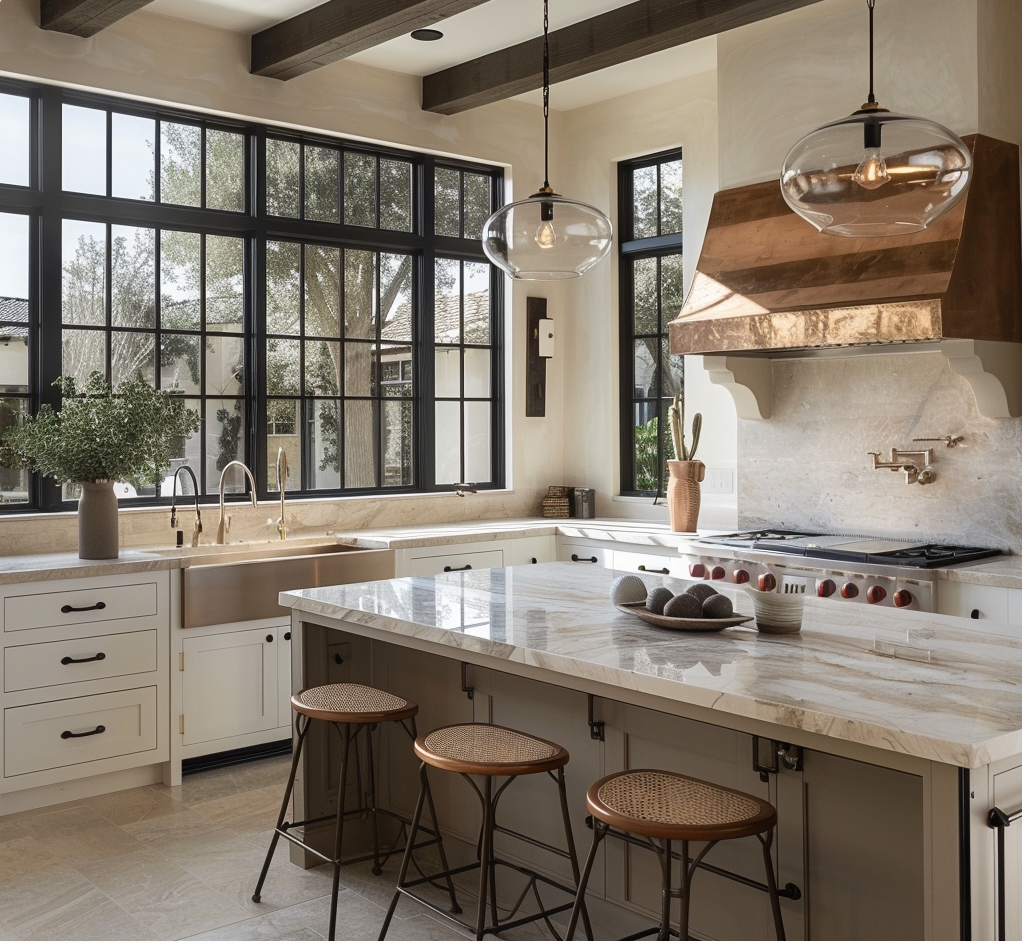Kitchen Trend of 2024 is Balancing warmth and coolness in a neutral palette is essential for creating a harmonious and inviting space.
1. Introduction
In the ever-evolving world of kitchen design, warm neutrals are stealing the spotlight. Say goodbye to stark whites and sterile grays—today’s kitchens are all about comfort, texture, and sophistication.
2. The Allure of Warm Neutral Grays
- Beige Revival: Beige is back, and it’s anything but boring. Designers are layering warm gray tones to create luxurious, refined spaces that exude warmth.
- Inspiration Points: Start with a captivating piece—a rug, a favorite object, or even the veining pattern in natural stone. Let it guide your color palette1.
3. Layering Textiles and Materials
- Textile Mix: Layering textiles with varying tones, textures, and patterns prevents a warm neutral palette from falling flat. Think florals, stripes, and small-scale prints in materials like linen, cotton, and wool.
- Natural Elements: Beyond textiles, consider natural materials like wood, marble, and clay. These add dimensionality and earthy charm to your kitchen1.
4. Warm Brass Hardware: Elegance and Versatility
- Subtle Sophistication: Warm brass complements deeply hued cabinets (think blues, greens, and blacks) without stealing the show. It adds elegance and sophistication.
- Neutral Palettes: Even in neutral-toned kitchens, soft brass hardware provides a pop of visual interest. It’s the perfect antidote to stark black-and-white looks2.
5. The Role of Beams in Kitchen Design
- Architectural Impact: Exposed beams create drama and character. Whether rustic or sleek, they add visual interest to your kitchen ceiling.
- Open Concept: Beams define spaces in open-concept layouts. They delineate the kitchen area while maintaining an airy feel.
- Texture and Warmth: Wooden beams infuse warmth and texture, balancing modern elements like stainless steel appliances and sleek countertops.
6. Conclusion
Warm neutrals, brass hardware, and architectural beams—these elements transform your kitchen into a welcoming haven. Embrace the trend, experiment, and create a space that reflects your unique style.
Balancing warmth and coolness in a neutral palette is essential for creating a harmonious and inviting space. Here are some practical tips:
- Start with a Neutral Base: Begin with neutral colors like white, beige, or gray as your foundation. These serve as a canvas for layering warm and cool accents1.
- Use the 60-30-10 Rule:
- 60% Dominant Color: Choose a dominant color—either warm or cool—to cover the majority of your space.
- 30% Secondary Color: Introduce a secondary color that complements the dominant one. This can be a contrasting warm or cool shade.
- 10% Accent Color: Add pops of an accent color (opposite on the color wheel) to create visual interest1.
- Pair Complementary Hues:
- Combine warm and cool colors strategically. For instance:
- Blue & Orange: A classic pairing—cool blue with warm orange.
- Gray & Yellow: Gray provides neutrality, while yellow adds warmth.
- Green & Terracotta: Earthy green balanced with a warm terracotta1.
- Combine warm and cool colors strategically. For instance:
Remember, achieving balance is about proportion and thoughtful placement. Experiment with different shades until you find the perfect equilibrium for your neutral palette! 🎨🏡 1

